You have arrived at the last entry of our 7 part Understanding Addiction Series. Previously, we have discussed LSD, crystal meth, alcohol, cocaine, heroin, and ecstasy. Today we will discuss prescription drug addiction. Prescription drugs, like Percocet, OxyContin, Vicodin, Codeine, Valium, Ativan etc., are often abused by teenagers and adults alike. More prescription drugs are abused than illicit drugs. Many people falsely believe that because they are prescribed by doctors, they are safe. However, prescription drugs are very dangerous and addictive, and even under the close watch of your doctor, you can experience many negative effects. Prescription drugs should only be used as directed, by the person they were prescribed for. Many people become addicted to the drugs that they have been prescribed.
Most people begin using prescription drugs because their doctor prescribes them. Many others (especially teens) take their friend’s prescriptions to ease their pain, or help them focus on their school work. Nearly ⅕ of teens have tried to get high with prescription drugs. This is dangerous for many reasons: you could become addicted, mix medications, give yourself improper doses, use the prescription drugs as a gateway to other drugs, and potentially death. If you are taking other medications, you can create dangerous effects if you take an additional medication that has not been prescribed by your doctor. Also, every person is different, and you may take the wrong dose of drug because your doctor didn’t carefully determine your body composition and tolerance. There are four categories of prescription drugs: depressants, opioids, stimulants and antidepressants.
Depressants
Depressants include drugs such as Valium and Xanax are often prescribed for anxiety, panic attacks, and sleep disorders. They produce a calming effect on the user, and are often abused as users try to recreate that effect. Depressants can slow brain function, cause confusion, dizziness, fevers, disorientation, depression, paranoia, and impaired judgment, coordination and memory. Overdose can slow the heart rate down to life-threatening speeds. Even withdrawal from depressant prescription drugs is life-threatening.
Opioids
Opioids, or painkillers such as OxyContin, Vicodin, and Percodan, are the most commonly abused prescription drug. The drug can produce life saving effects to those who have chronic pain, but can also produce life-threatening results. They are known as gateway drugs, and many people become addicted to other drugs such as heroin after use. Immediate effects can include drowsiness, slowed breathing, and unconsciousness. Long term effects are: physical dependence, tolerance, comas, increased risk of heart attacks, and death.
Stimulants
Stimulants include drugs such as Ritalin, Concerta, and Adderall. They temporarily increase your energy and alertness. These drugs are often prescribed to help people with ADHD. However, other students will borrow or buy the drugs to help them perform better, stay up later, and to get high. Dangers of stimulant prescription drugs include: addiction, increased blood pressure and heart rate, irregular heartbeats, heart failure, paranoia, hostility or seizures.
Antidepressants
Common examples of antidepressants are Prozac, Paxil, Remeron, Effexor, Zoloft and Celexa. These drugs are used as a pick-me-up to help the user feel elated. Antidepressants can lead to paranoia, psychosis, insomnia, suicidal thoughts, hostility and aggression, especially when used in incorrect doses.
Teens are bombarded by prescription drugs in the media, and see popping pills as a normal thing to do. They may see their parents taking prescription medication, and many teens steal their parent’s prescription drugs and begin the drugs them themselves. Many of them do not understand the dangers associated with the drugs and become addicted without realizing that they could. Carefully watch your prescriptions and make sure that no one else is using them but you, and that you are using them according to your doctor’s instructions.
